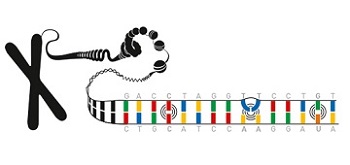The Nobel Prize in Chemistry has been awarded to three pioneering scientists who mapped the mechanism by which cells repair damaged DNA at a molecular level. Understanding the mechanisms by which damaged genetic information is repaired is essential in the prevention of cancer and other harmful mutations.

The Nobel Laureates are Tomas Lindahl from the Francis Crick Institute and Clare Hall Laboratory, Paul Modrich from the Howard Hughes Medical Institute and Duke University School of Medicine, and Aziz Sancar from the University of North Carolina.
The studies by the three scientists provided elementary knowledge about the how living cells function. It is hoped, now that the mechanisms of DNA repair are know, this research could be used in the development of novel cancer treatments. DNA molecules are not completely stable meaning 'damage' to the genetic information can occur seemingly spontaneously. DNA can also get damaged by UV radiation, carcinogenic substances and free radicals.
On a daily basis a cell’s genome undergoes a countless number of spontaneous changes. Additionally, defects can also be introduced during cell division when the copying of DNA takes place. In mammals, events in which the DNA is replicated occur multiple times a day.
With all of the different mechanisms by which DNA damage occurs you would expect DNA to become irreparably damaged over just a short time-scale. This is prevented by a host of molecular machinery that constantly and consistently monitors and repairs DNA.
Announcement of the Nobel Prize in Chemistry 2015
2015 Nobel Prize: Chemistry Announcement| Youtube
The 2015 Nobel Prize in Chemistry honors the three scientists for the mapping of the such DNA repair systems at a molecular level to determine exactly how they function.
Earlier, DNA had been considered as an extremely stable molecule. However, Tomas Lindahl has showed that decay of DNA takes place at a rate that would make the development of any form of life on Earth impossible, were it not for its extensive repair mechanism.
This finding helped Lindahl discover the mechanism of base excision repair, a form of molecular engineering that continuously counteracts the DNAs collapse.
Aziz Sancar mapped the mechanism of nucleotide excision repair; a mechanism which the body uses to repair UV damage to DNA. People who are born with defects in their nucleotide excision repair system are at a higher risk of skin cancer upon exposure to sunlight.
Mutagenic substances such as cigarette smoke can also cause defects, these defects can be repaired, to an extent, by the nucleotide excision repair system.
During the replication of DNA that takes place as a cell divides errors can be introduced to the genetic code. Though most of these errors are harmless others can result in cancers. Paul Modrich demonstrated that cells utilize a mismatch repair mechanism to lower the error frequency by over a thousand.